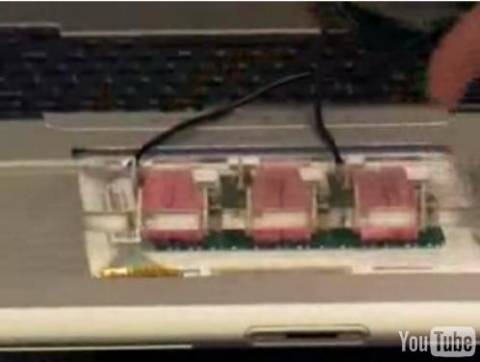Microsoft Research Give Us Another Multi-Touch Option
Somewhere along the line we're going to have to start differentiating exactly what we mean by "multi-touch". In Apple's world it's the skin-sensitive capacitive touchscreen on the iPhone, which can respond to multiple fingers prodding and stroking at it at once. In Lenovo's world (and that of other Tablet PC manufacturers) it means a touchscreen with both active and passive layers, that can either use a special stylus or the user's finger, nose or half-chewed pencil. Now, Microsoft Research have come up with a multi-touch display of their own, and as you'd expect it's again slightly different. Here, Steve Hodges of Microsoft Research Cambridge explains their new technique. https://www.youtube.com/watch?v=ulwA3n8AYM0
Basically it's a normal laptop with an infrared array stuck to the back of the LCD panel and shining invisible light through. When a finger, stylus or anything else moves close, some of the infrared light is reflected back in and is interpreted as a touch. In this way, the array can recognise multiple points of contact, allowing for the usual gesture-based controls as seen in the video.

A by-product of the technology is that it can respond to standard remote controls. Hodges suggests using these as another form of control, flipping through menus and manipulating images. As Long Zheng suggests, with the cost of infrared hardware being so low, this is perhaps the cheapest type of multi-touch we could expect to see. The prototype only has a small window of functionality in the center of the screen, and the gubbins that makes it work are quite bulky, but we'll cut them some slack since it's the first one they've made.
